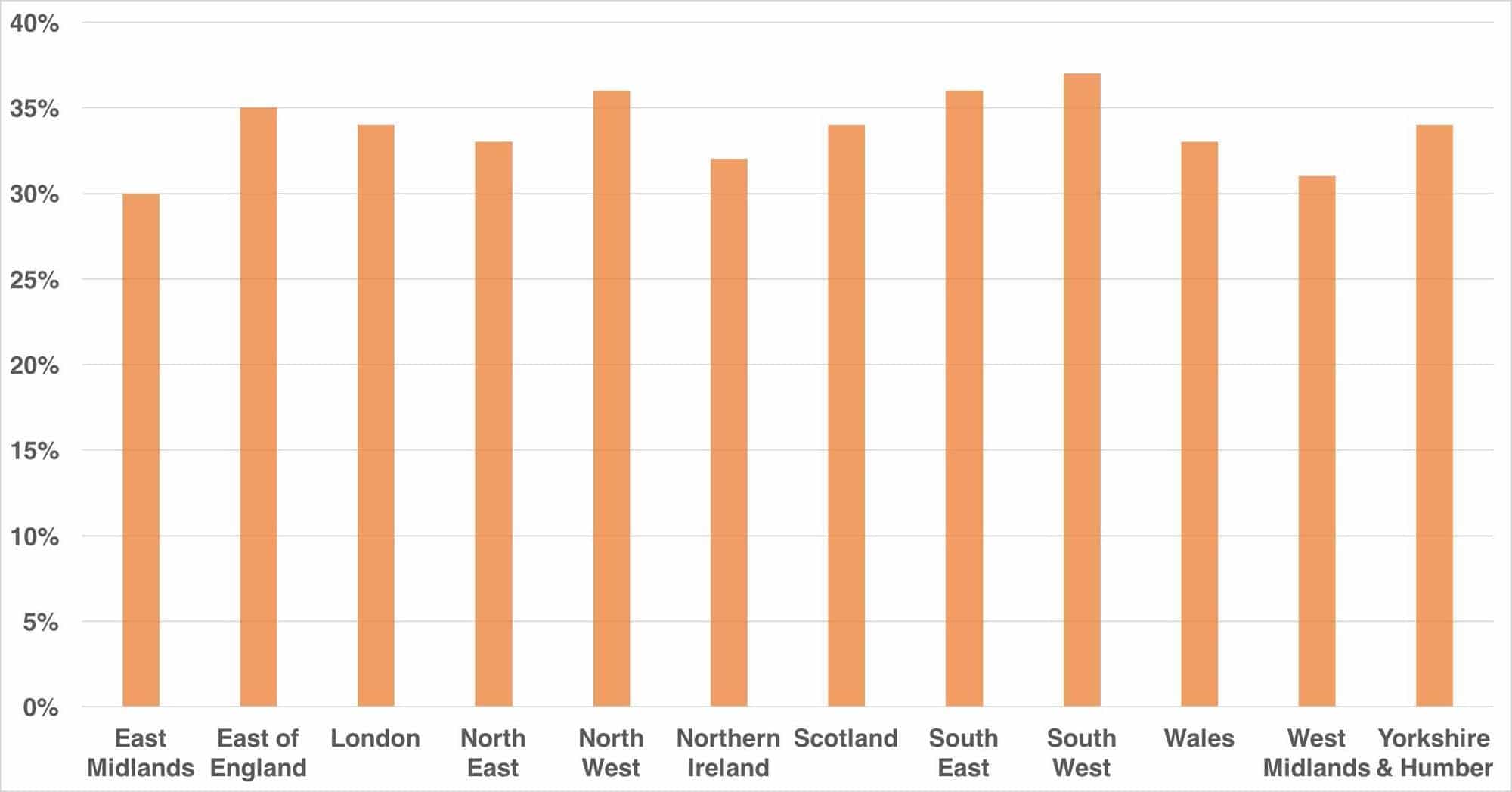A 2013 KPMG report into gender balance in higher education looked at the ratio of women on university boards across the country and presented data which showed that 33% of all governing body members across 166 institutions were women.
HEFCE has set aspirations for this to be 40% for all English universities by 2020, and the Scottish Funding Council aims to achieve that level by 2018.
Our new research project run jointly by Minerva and Wonkhe involved mapping all university governing bodies in the UK during the latter part of 2015. We were interested to know whether there had been improvement in gender balance since 2013, and whether there were any consistent patterns revealed. Were some regions, or certain types of institution performing better than others?
The results were intriguing – with a first headline being that little has changed overall since 2013, and, in fact, the data suggest a very slight decline in representation of women on boards. Based upon what is publically available, of the total 3322 governors across the 169 institutions we looked at, 1130 are women: this amounts to 32%. It is not a significant change but it is moving in the wrong direction and does suggest that a lot more needs to be done if we are to reach the targets across the whole sector.
We then looked at the data by mission group, and again there is not a huge overall deviation. The Russell Group averages at 37% female membership on its boards, higher than Million+ with 35% and the Alliance with 32%. The group which had the lowest overall percentage was the Independent Universities Group, with a total of only 31%, although one of its members, Regent’s University, has one of the highest representation of women on its board in the country. We also looked at the data across regions, and found some interesting, although not massive overall deviations:

The South West, South East and North West all have above 35% female membership of their HEI boards, and the East Midlands and West Midlands have the lowest overall, at 30% and 31% respectively.
The data was most interesting to us when we looked at the full spread of institutions by percentage. Here the picture suddenly is very different. The spread ranges across the whole of the UK between as low as 15% and as high as 60%. 48 institutions already have over 40% representation (28% of the 169 institutions we looked at), and 55 have less than 30% (roughly 35%). Or put more clearly, over a third of universities in the country have less than 30% representation of women on their governing bodies. On the other hand, nearly a third already exceeds the HEFCE/SFC targets.
Looking at the institutions which have lowest gender balance on their boards, a theme seems to be that, if you are a small specialist institution focused on animals, agriculture or medicine, it can be difficult to achieve balance. Conversely, small specialist and institutions known for work with the creative industries tend to be amongst the most balanced: Plymouth College of Art, Bath Spa, the Royal College of Art, Glasgow School of Art, Ravensbourne and Falmouth all were in the top fifteen in the country in terms of gender balance. Three Russell Group Universities are also in the top fifteen – Exeter, Manchester and QMUL.
| Trinity Laban Conservatoire of Music and Dance |
| Glasgow School of Art |
| Ravensbourne |
| Queen Mary University of London |
| University of Sussex |
| University of St Mark and St John |
| University of Manchester |
| Royal College of Art |
| Bath Spa University |
| Falmouth University |
| Liverpool John Moores University |
| University of Exeter |
| Regent's University |
| Plymouth College of Art |
| Bucks New University |
The top fifteen universities in the country for highest level of female membership of governing bodies, all above 47%
We discussed these figures with some of the institutional heads and Chairs. The consistent message was that none of them had achieved this by accident but only through making achieving a more balanced board an absolute priority. Although a number of the institutions in the top fifteen have female vice chancellors, the data set overall doesn’t conclusively suggest that an institution with a woman as either Chair or VC is more likely to have a balanced board: a positive implication of this being that male leaders are increasingly taking the issue seriously. It will be interesting to see how the overall balance evolves in the sector in the coming years.
It is worth noting as we plan to present more snapshots of this research, that we fully acknowledge that the dataset has flaws. For one thing the situation is extremely fluid – HEI board members rotate on and off on a regular basis, and individual institutional board composition is always evolving. For another, we might hypothesise that some institutions might update the information more speedily than others. It was also suggested to us during this research that some board members might not want their information made public on a website, although we wonder how many institutions would feel comfortable having a board member who was ashamed to be publically associated with them. We, therefore, acknowledge that our data set is not perfect, but we are confident of its overall thoroughness and robustness. We are eager to engage with anyone who wants to discuss the project further, and would welcome ideas on how it might develop. Over the coming weeks, we will present a number of different views of the data, which also looked at many other aspects of board composition.













Can you clarify whether you have data broken down by gender and lay members on Boards as distinct from gender and all members? Decisions about the executive membership and lay members are a result of different processes which may influence what conclusions can be drawn. Fiona Ross
Our data is of all governors of UK universities.